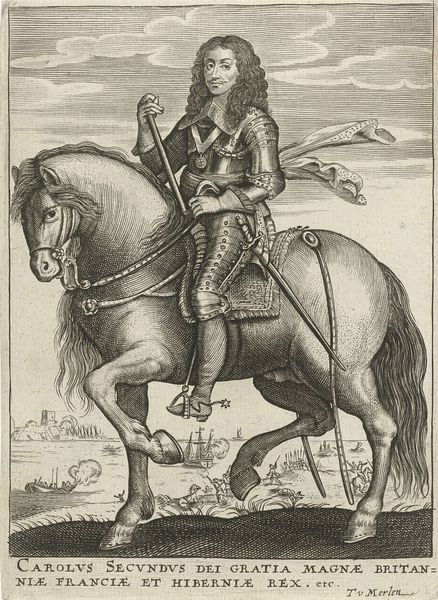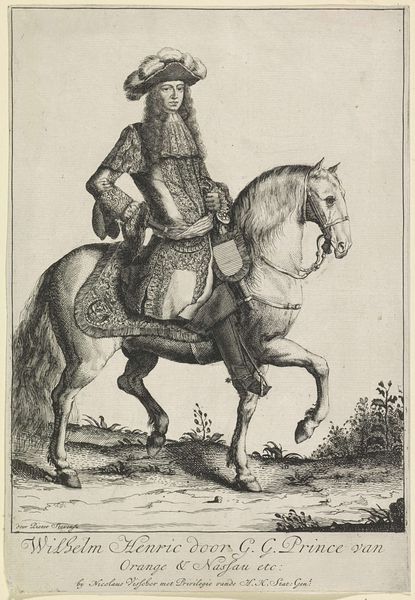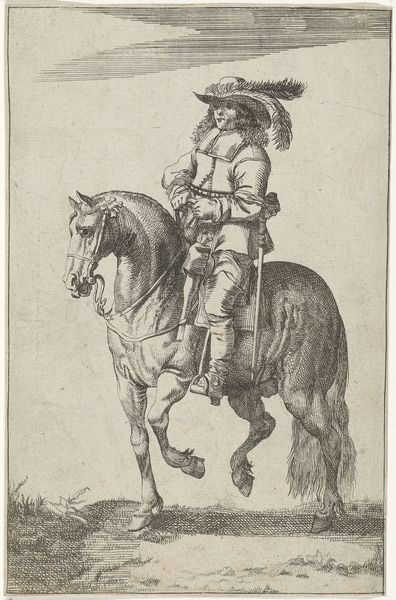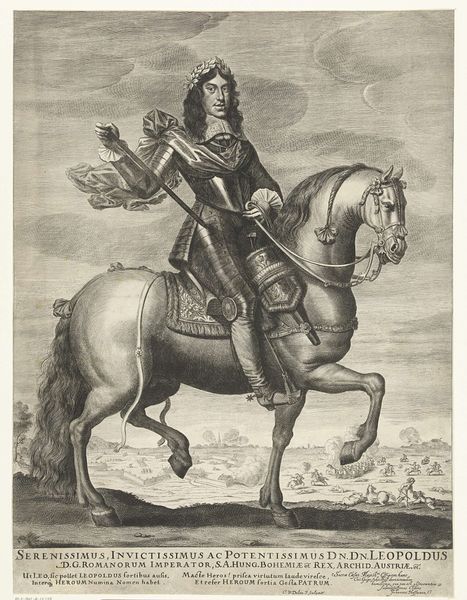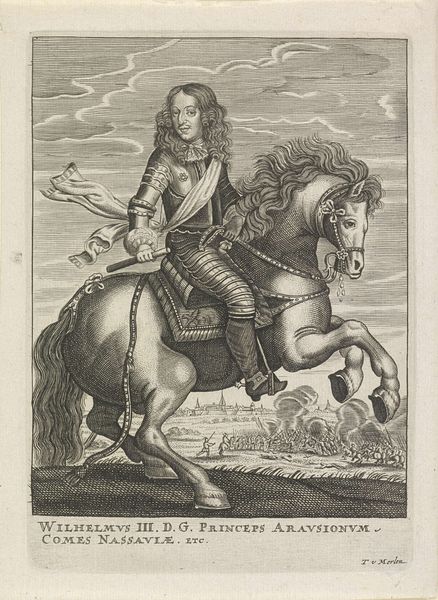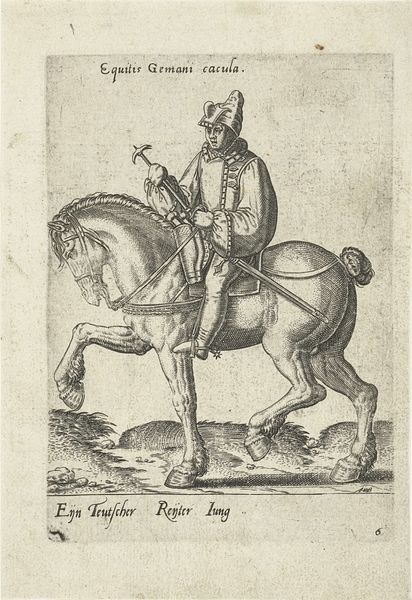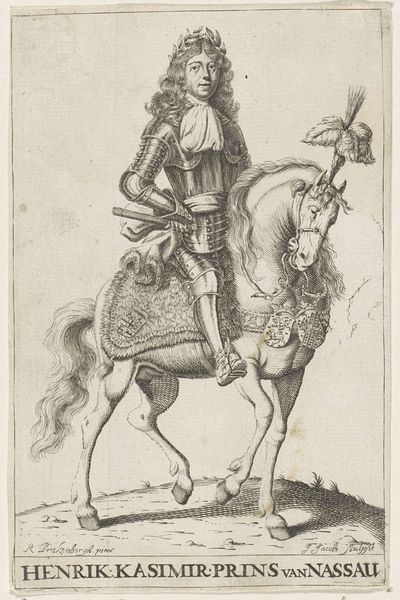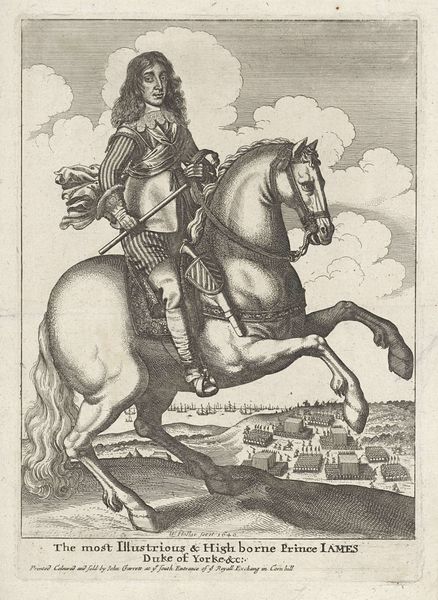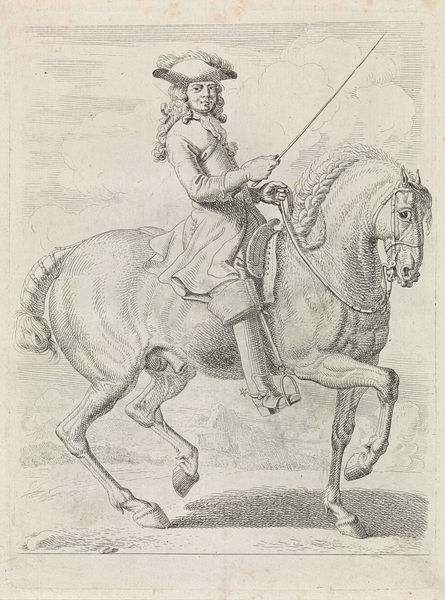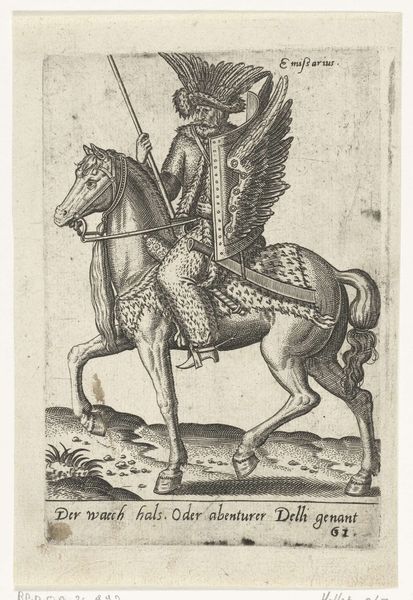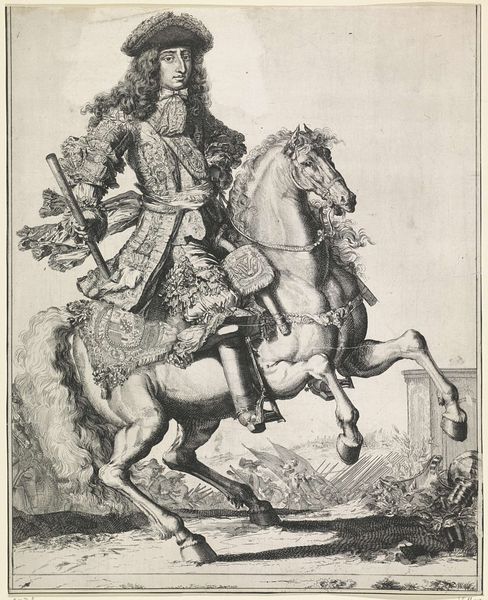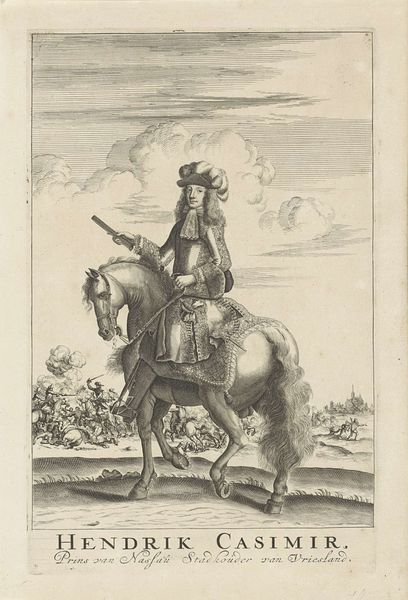
print, engraving
#
portrait
#
baroque
# print
#
genre-painting
#
history-painting
#
engraving
Dimensions: height 145 mm, width 96 mm
Copyright: Rijks Museum: Open Domain
Editor: This is a print called *Ruiterportret van Willem IV, prins van Oranje-Nassau*, created between 1747 and 1767 by Jacob Folkema. The portrait feels incredibly formal. The subject seems a little stiff. How do you see this portrait in the broader scope of art history? Curator: It feels like looking into a very particular mirror, doesn't it? One reflecting power, lineage, and the carefully constructed image of a leader. But look closer, and you'll see the intricate dance between the artist and his subject. There’s the detailed armour glinting in an imagined light, the horse—more a symbol of strength than a breathing animal—and William himself, regal but almost…vulnerable, don't you think? Folkema, with his engraver's tools, was crafting not just a portrait but a carefully spun narrative, a myth, really. Think about the cultural and historical context in which Folkema operated, can you detect any clues of its style of Baroque in the artwork? Editor: I see the ornate detail now that you mention it. Almost every space is decorated. Does that speak to a wider cultural attitude during that time? Curator: Absolutely! The Baroque period, it loved a bit of drama. This wasn’t just art; it was stagecraft, designed to impress and overwhelm, a deliberate attempt to project power and legitimacy. What this portrait evokes is the sense of an era grappling with its own identity, an attempt to hold onto a particular vision of authority in a changing world. The controlled lines of the engraving somehow amplifying that sense of tension. Does that resonate with you at all? Editor: Definitely, the print felt stiff at first, but knowing the Baroque love for grand gestures, it makes the image richer and more profound. Curator: Exactly, it makes the seemingly rigid image full of dramatic context.
Comments
No comments
Be the first to comment and join the conversation on the ultimate creative platform.
